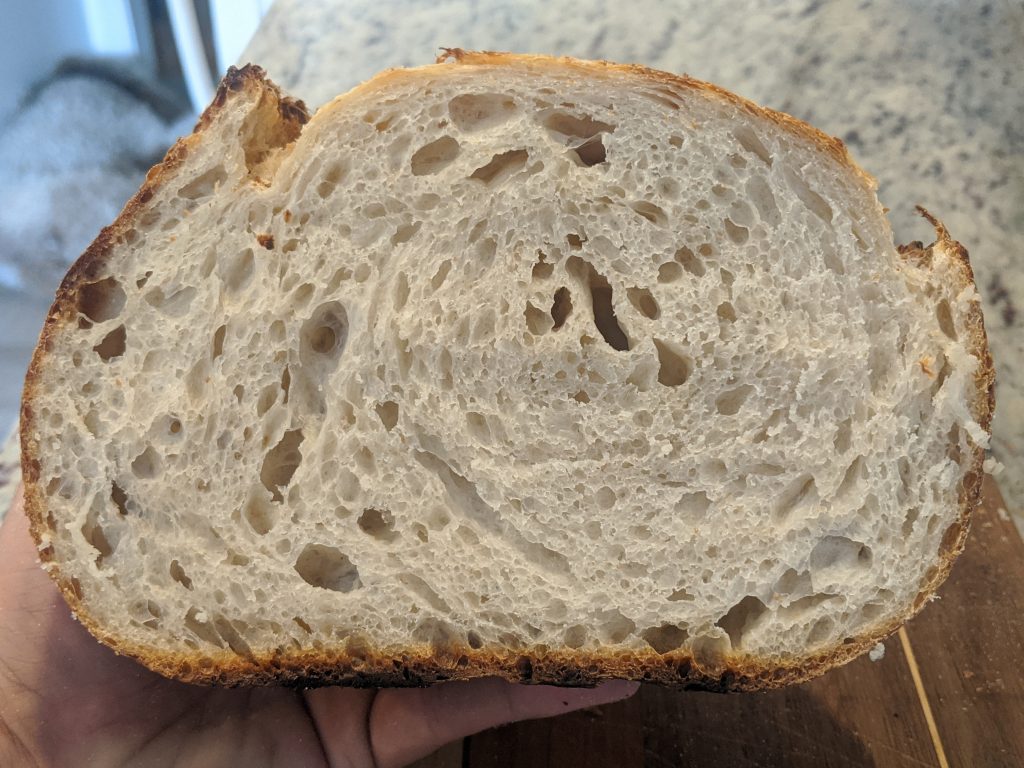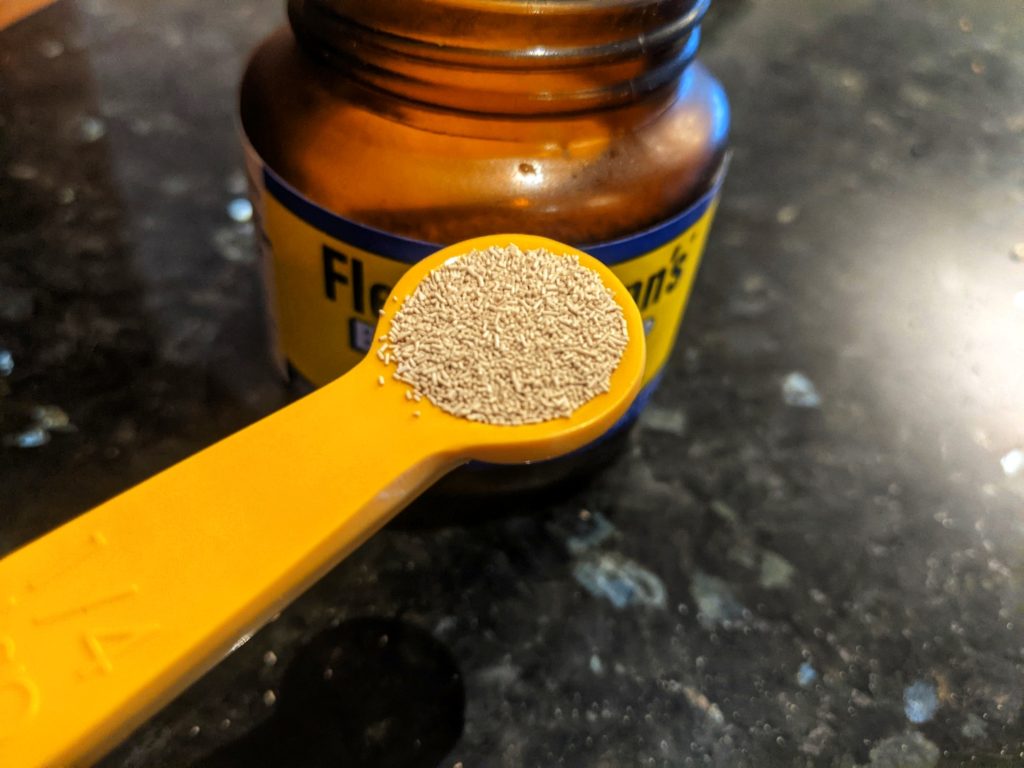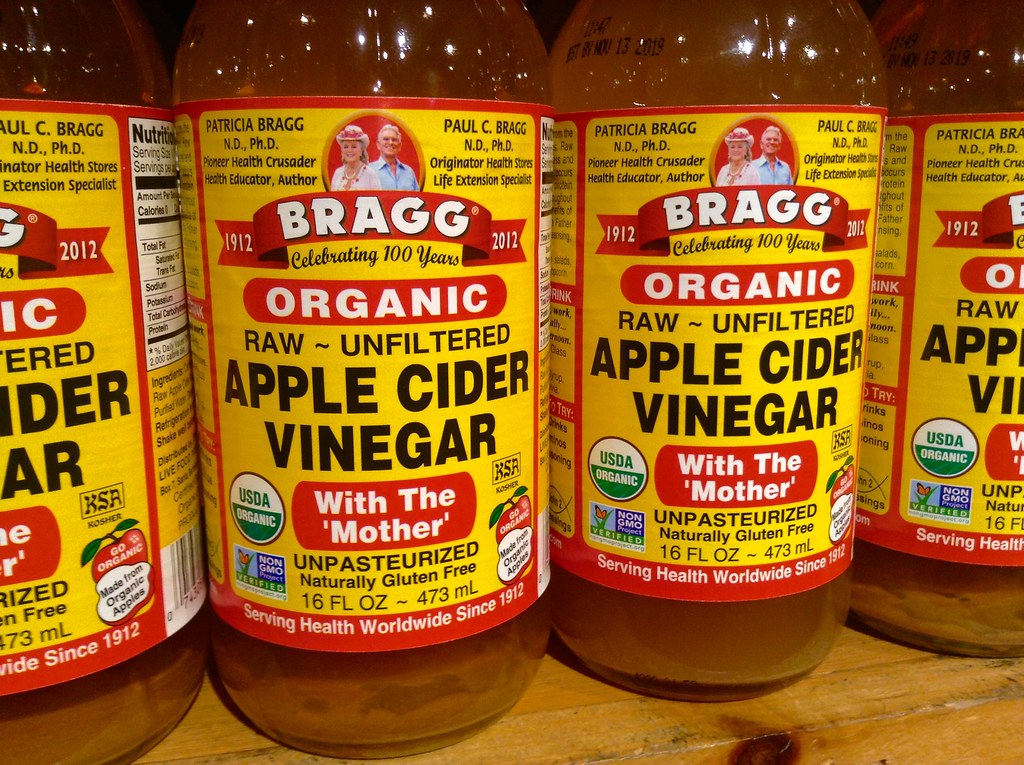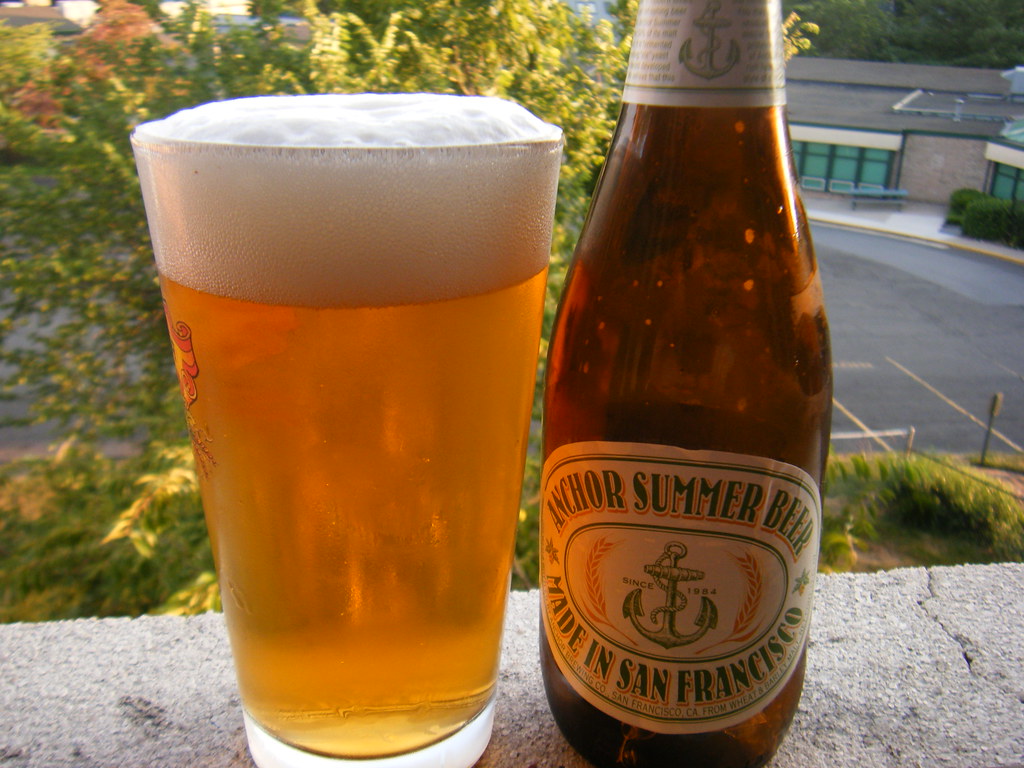
Because “sourdough” is technically a method of making bread, and not a specific bread recipe, it can be hard to say what exactly sourdough bread tastes like. For example, a sourdough rye bread from Germany will taste drastically different than a loaf of white sourdough bread from San Francisco. So how do you explain what sourdough bread tastes like? I believe I have an answer for you.
What Does Sourdough Bread Taste Like?
As a general rule, sourdough bread tastes similar to yeasted bread, but with a hint of tanginess from the natural acids in the sourdough starter. Usually the flavor of yeast isn’t very strong in sourdough bread like it is in other breads. Depending on how long sourdough bread has fermented, it can range from mildly sweet on one end of the spectrum, to very sour on the other end.
So, sourdough bread is unique. It’s made from a natural “sourdough starter” instead of from commercial baker’s yeast, and as such, the flavor of the bread can vary greatly depending on the particular starter from which it is made.
If you want to try my favorite sourdough bread recipe, which produces a mildly tangy loaf, you can follow the recipe here.
Let’s explore the four elements that are present in sourdough starters that make sourdough bread taste unique:
- Yeast
- Bacteria
- Acid
- Alcohol

1. Yeast
Types of Yeast in Sourdough Bread
Yeasts are a diverse range of single-celled microorganisms in the kingdom fungi. There are more than 1,500 yeast species in the world, and Saccharomyces cerevisiae is the main species of yeast found in commercially packaged baker’s yeast. Sourdough starters, on the other hand, contain a wide variety of yeast strains. And each different type of yeast has varying functions and characteristics which impart different flavors to sourdough bread.
Common yeast strains found in sourdough bread include Saccharomyces cerevisiae, Saccharomyces bayanus, Kazachstania humilis, Kazachstania unispora, Naumovozyma castellii, Debaryomyces, just to name a few (source). These yeasts grow naturally on fruits, grains, vegetables, soil, and air, and they wind up in many household sourdough starters.
The exact strains of yeast that end up in your starter vary depending on the origin of the starter and its particular environment. In short, different sourdough breads contain different types of yeasts, and that can make them taste a little bit different.
How Yeasts Affect The Flavor of Sourdough Bread
Yeasts mainly act as the leavening agent in sourdough bread – they are the reason the bread rises. But, yeasts also affect the aroma and flavor of sourdough bread, mainly because of the byproducts they produce throughout the fermentation process.
The yeast Pichia anomala, for example, can produce the smell of artificial banana due to its isoamyl acetate byproduct (source). Saccharomyces servazzii is known for its funky-smelling characteristic and massive production of carbon dioxide with intense leavening ability. The differing mix of yeasts strains is one explanation as to why every sourdough bread has a unique flavor.
However, yeasts are only a single element of what’s going on inside of your sourdough bread. Bacteria play a part too.

2. Bacteria
Types of Bacteria in Sourdough Bread
While many people think that sourdough starters only consist of wild yeasts, they actually have a higher ratio of bacteria to yeasts of about 100:1 (source). Bacteria, specifically lactic acid bacteria, are the forgotten heroes of sourdough starters. When making a sourdough starter, the initial mixture of water and flour creates an acidic environment which is rich in carbohydrates, the perfect environment for the Lactobacillus species of bacteria to thrive and outcompete other bacteria.
Lactic acid bacteria are generally categorized into two groups; homofermentative and heterofermentative bacteria.
Homofermentative bacteria break down simple sugars to form lactic acid. That lactic acid lingers in the finished loaf of bread, significantly contributing to the sourness of sourdough bread. These particular bacteria do well in temperatures between 30–35°C or lower. Examples in this category include Lactococcus, Enterococcus, Streptococcus, Pediococcus, Lactococcus, Enterococcus, L. casei, L. Plantarum, L. delbrueckii, and L. acidophilus (source).
Heterofermentative bacteria break down simple sugars and produce three things: carbon dioxide, lactic acid, and acetic acid. The carbon dioxide gives some rise to the dough while it bakes, while the lactic acids and acetic acids that are produced remain in the loaf giving it a sour taste. These bacteria strains thrive best at temperatures between 15–22°C but can also develop in a broader range. The most common heterofermentative lactic acid bacteria species include Lactobacillus sanfranciscensis, L. Brevis, and L. Fermentum (source).
How Bacteria Affect The Flavor of Sourdough Bread
Lactic acid bacteria in sourdough starters impact the flavor of sourdough bread through the production of acids. In gerneral, homofermentative lactic acid bacteria impart flavors that remind you of dairy products, like yogurt or cream. On the other hand, heterofermentative lactic acid bacteria impart a vinegar-like, sharper taste to sourdough bread, due to their production of acetic acid.
The acids that the bacteria produce during fermentation are generally what you taste in the final loaf of bread. So, let’s talk about those acids!

3. Acid
Types of Acids in Sourdough Bread
There are two major acids produced in a sourdough starter culture: lactic acid and acetic acid. The Homofermentative lactic acid bacteria break down sugars from the dough into lactic acid, while heterofermentative lactic acid bacteria break down the same sugars into lactic acid, acetic acid, and also carbon dioxide.
Both lactic acids and acetic acids impart unique flavors to sourdough bread. Let’s consider how each can affect the final taste of the bread.
How Acid Affects The Flavor of Sourdough Bread
Acetic acid, which is also common in vinegar, gives sourdough bread a tangy, vinegar-like flavor. Lactic acid, on the other hand, imparts a mild yogurt-like flavor to sourdough. In theory, you can adjust the conditions of your sourdough starter to favor one of these acids over the other. This is how some bakers try to change the level of sourness in their sourdough breads.
So, we’ve talked about how yeasts, bacteria, and acids all play a role in sourdough flavor. Now, let’s talk about alcohol.

4. Alcohol
Types of Alcohol in Sourdough Bread
Ethanol is a type of alcohol found in sourdough bread that is produced through an alcoholic fermentation process. During the proofing process of sourdough bread making, the yeasts in the dough get to work. They break down the carbohydrates from the flour and turn them into two things: carbon dioxide (which makes the bread rise) and also ethanol.
Ethanol, although rarely talked about, plays a significant role in affecting the flavor of sourdough bread.
How Alcohol Affects The Flavor of Sourdough Bread
When a loaf of sourdough bread is baking in the oven, the ethanol starts to evaporate, which causes some formation of gas bubbles. This, as well as the carbon dioxide, helps the sourdough bread to rise. Although most of the ethanol evaporates during baking, traces of the alcohol remain, helping to improve the flavor, odor, and keeping qualities of the finished sourdough bread.
Some ethanol is further converted to lactic acid by lactic acid bacteria, adding to the sourness of the loaf.
In general, the ethanol present in sourdough bread will add a slight beer-like flavor to the loaf. If the sourdough bread is significantly over fermented, this alcoholic taste may be stronger and also unpleasant.
Conclusion

As you can tell, the taste of sourdough bread is very complex. Yeasts, bacteria, acids, and alcohol all play a part in the final flavor of any sourdough bread. What’s certain is this – when sourdough bread is made well, the complex balance of these flavors is far superior to bread made with baker’s yeast alone (or maybe that’s just one home baker’s opinion).
Hopefully this article was helpful in explaining what makes sourdough bread taste so unique.
Are you are interested in making your own sourdough starter from scratch? If you are, I actually filmed a video just for you! Watch my sourdough starter video on YouTube here. Follow the steps in the video and you can have an active sourdough starter in as little as seven days.
